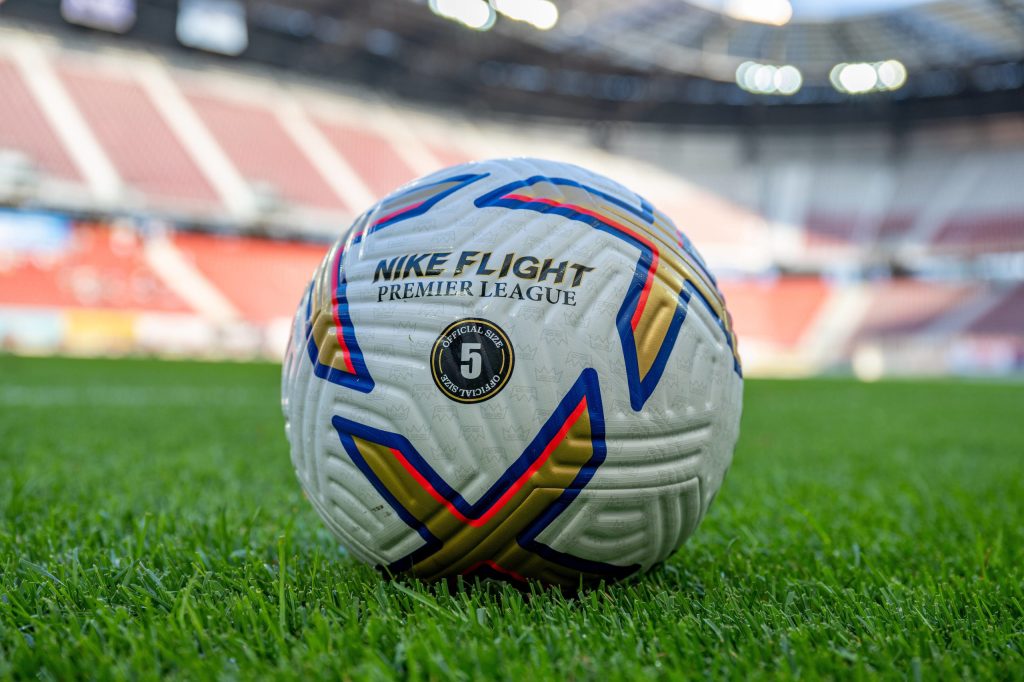Molde travelled to Ferencvaros on Tuesday evening knowing they effectively needed to win the match. A 3-3 draw in the first leg of the UEFA Champions League qualifier left the tie finely poised and created interesting tactical decisions for the coaches to make. This tactical analysis will look at the tactics employed by Molde and Ferenvaros in this match. The analysis will focus mainly on the team’s differing defensive structures, as well as Molde’s attacking tactics.
Lineups
Former Tottenham and West Ham player Serhiy Rebrov made four changes to his Ferencvaros side, switching to a 4-2-3-1 formation with Denes Dibusz starting in goal. Gergo Lovrencsics started at right-back, with Miha Blazic and Endre Botka the centre-backs, and Marcel Heister at left-back. Somalia and Ihor Kharatin acted as the double pivot in midfield with David Siger playing ahead of them. Oleksandr Zubkov and Tokmac Nguen were the right and left-wingers, with Myrto Uzuni playing as a centre-forward.
Erling Moe made only one change from the first leg with Marcus Holmgren Pedersen coming in to play right-back in a 4-2-3-1 formation. Stian Rode Gregersen and Martin Skjelbreid Ellingsen were the centre-backs, and Kristoffer Haugen played left-back. They protected goalkeeper Andreas Linde. Etzaz Hussain and Fredrik Aursnes played as the double pivot with Eirik Hestad ahead of them. Erling Knudtzon and Magnus Wolff Eikrem were the other advanced midfield players, with Leke James the sole striker.
Molde’s defensive structure
Despite needing to score at least one goal to qualify, Erling Moe set up Molde in a fairly conservative defensive structure. When Ferencvaros had possession in their defensive third or the middle third Molde set up generally in mid or low-block. Eirik Hestad would drop in to form a five-man midfield line in front of the back four with little gap in between, as can be seen below.
Molde allowed Ferencvaros’ defenders easy possession with Hestad following any opposition midfielders who dropped deep to offer an extra passing option. The Hungarian side’s response was for their right-back Lovrencsics to play narrower whilst left-back Heister pushed higher and wider.
In this shape, Ferencvaros are left with three options of progressing the play, the first two of which were rarely used. With Lovrencsics making a three-man defence against a solitary Molde striker, the first option would be to create an overload on one side and allow one of the defenders to dribble forward, forcing one of Molde’s midfield five to break the line and engage the ball carrier.
The second possibility would be the cross-field pass to Heister. Due to him keeping the width, he is the only Ferencvaros player in between the lines who would potentially have space to operate in. This would force Molde right-back, Holmgren Pedersen, to engage, and leave his defensive line 3v3 with the Ferencvaros attackers. Options one and two are both shown in green on the image.
The option usually taken was the straighter long pass over the top of the Molde defensive line. With the space in between the lines (blue shaded area on image) so narrow, Ferencvaros’ forward line looked to push right up against the Molde backline and use their pace to get in behind.
Molde were able to deal effectively with this long pass throughout the match. Ferencvaros defenders often grew frustrated when unable to progress the ball for a period of more than ten seconds, and made it obvious when the long, straight pass was coming. Molde’s defenders dropped 5-10 yards, positioned themselves on the half-turn and were able to win the resulting aerial duels against the less physically-imposing attackers.
The Ferencvaros defenders either failed to grow wise to Molde’s dropping defensive line in this situation or simply lacked the attributes to take advantage. In this situation, alternative options again present themselves (again marked green) with Heister still a potential cross-field passing target. As we can see, the dropping lines has allowed one of the Hungarian team’s pivot midfielders more space to operate and a simple pass into him presents itself as a much easier alternative.
That the Ferencvaros defenders often chose the straight pass made it easy for the Molde defence and resulted in very few chances for the home side, Ferencvaros recording an xG of just 0.19.
On the odd occasion where Ferencvaros players did receive the ball in between the lines – usually in transition – Molde’s defensive mindset changed, as can be seen below.
In this instance, Ferencvaros pivot Somalia has collected possession following a Molde defensive clearance. With the ball in this area, the Norwegian team’s defensive attitude was much more aggressive with three players all pressing the ball carrier and forcing a turnover of possession.
Erling Moe’s gameplan worked well in the defensive sense, though Molde often rushed their defence-attack transitions and posed little threat on the counter-attack.
Ferencvaros press
Ferencvaros pressed higher and more intensely than Molde, recording a PPDA (a metric that measures the number of passes a team allows the opposition before producing a defensive action) of 9.9 compared to Molde’s 17.0. This is skewed slightly by a period in the second half (which will be discussed in the next part of this tactical analysis) in which the Hungarian Champions abandoned their press meaning the first-half only metric of 9.1 PPDA is more reflective overall.
The Ferencvaros press was very much positional in that the front four would occupy the space in between Molde’s defence and midfield but not aggressively press the possessor. The front four would look to cut off passing lanes between the defenders whilst the two midfield pivots would patrol the middle area of the pitch.
Molde’s response to this was for one of their own midfield pivots to drop in between his centre-backs and create numerical superiority. Ferencvaros were happy for Molde to do this as it simply meant Molde held possession in an area that posed no immediate danger.
When one the Norwegian Champions midfield pivots had possession deep, the Hungarian team set passing traps for him.
Here we see one of Molde’s pivots (Hussain) dropping very deep to receive possession. The front four of Ferencvaros press the space and allow only the option of a pass into the highlighted area. Given Molde’s shape, only Hestad or Aursnes are likely to drop into the area and once one of them do they are immediately pressed aggressively by the midfield duo of Ferencvaros. This forces a backward pass and leaves Molde struggling to progress the ball upfield.
In an attempt to beat the press, Molde regularly looked to go long into James’ feet. The striker made good runs into the channels and held the ball up well. He won 43% of his offensive duels as well as 33% of aerial duels, allowing Molde to frequently retain possession in their opponent’s half. The below image shows a typical occasion.
Here we see James’s movement into the channel allowing him to receive a long pass. He positions his body well so that the defender can’t beat him to the ball and instantly has three supporting runners. With the long pass having beaten the press, Molde’s front four have plenty of room to work in and face only five defenders, two of which are challenging James. The runners also create different angles, allowing for James either to continue play down the flank or to drop pass back for a switch to the opposite flank.
It must be noted that as well as James making clever movements, he was afforded space in between lines and the long passing from Molde’s defence (and midfield pivots) was generally of a higher quality than their opponent’s, allowing these tactics to be successful.
These tactics did leave Molde open to counter-attacks when the pass wasn’t accurate, however. With the trio of advanced midfielders having made their runs in support of James, space appeared in between the lines should the pass be closed down. The below image shows one of only a few such occasions.
Here we can see how all but four Molde players are caught ahead of the ball, leaving them with no numerical advantage against the attackers. Rotation from the right-winger and attacking midfielder disrupts the defensive line further and leaves Ferencvaros with a great opportunity to open the scoring. Typically for them in this match, decision making lets them down as Zubkov cuts inside and has his shot blocked when two better options (passes marked green) presented themselves.
Molde’s change of tactics
Molde made a change to their tactics on the 65th minute, bringing Ola Brynhildsen on and moving Magnus Wolff Eikrem into the middle of the attacking midfield trio. Immediately, Molde began to play higher up the pitch in need of a winning goal. As mentioned earlier in this tactical analysis, Ferencvaros rather abandoned their pressing structure at this point, aiming to preserve their aggregate lead.
As well as moving their captain more centrally, one of Molde’s pivots began joining in attacks as well as the full-backs pushing higher. All of this allowed Molde to receive the ball much more frequently between the lines of their opponents.
The above image shows how the full-backs (circled purple) and Wolff Eikrem (circled blue) began to influence the play. With Ferencvaros now allowing Molde to play forward much more easily, left-back Haugen is able to play a one-two with Brynhildsen, who in plays a one-two with his captain and ultimately ends up 1v1 in a crossing position.
Further evidence of the full-backs (again purple) and Wolff Eikrem’s (again blue) greater influence can be seen in the next image.
This time both of Molde’s midfield pivots have joined the attack and, although the Hungarian team keep a compact backline of four, their midfield completely lacks structure. The overlapping run of Holmgren Pedersen occupies the defender furthest wide for Ferencvaros, allowing the Norwegian Champions to create a simple overload and a great opportunity to win the match.
The next image shows this influence in the centre of the pitch.
This time, the Ferencvaros defender has decided to follow Hestad inside leaving the Molde full-back 1v1 against his opponent. As we can see, the defensive line is fine but the midfield of the Hungarian side again has no structure and Wolff Eikrem is able to receive the ball in between the lines.
Molde failed to make this period in the game pay, missing the chances they created. From the 76th minute onwards the defensive structure of Ferencvaros improved, as did there PPDA (dropping from 23.33 in the previous 15-minute period to 8.9), and they saw the game out fairly comfortably.
Conclusion
Molde will be hugely disappointed not to progress to the group stage of this season’s UEFA Champions League having carried out their tactical plan supremely well in this second leg. They restricted their opponents to very few chances and created enough to win the game themselves, recording an xG of 1.17. With their Eliteserien title defence already as good as over, their failure to take advantage of the dominant period after their first substitution will be rued for a long time.
Ferencvaros on the other hand will be greatly looking forward to taking on some of Europe’s elite, though they will have to improve their decision making to make any impact.






